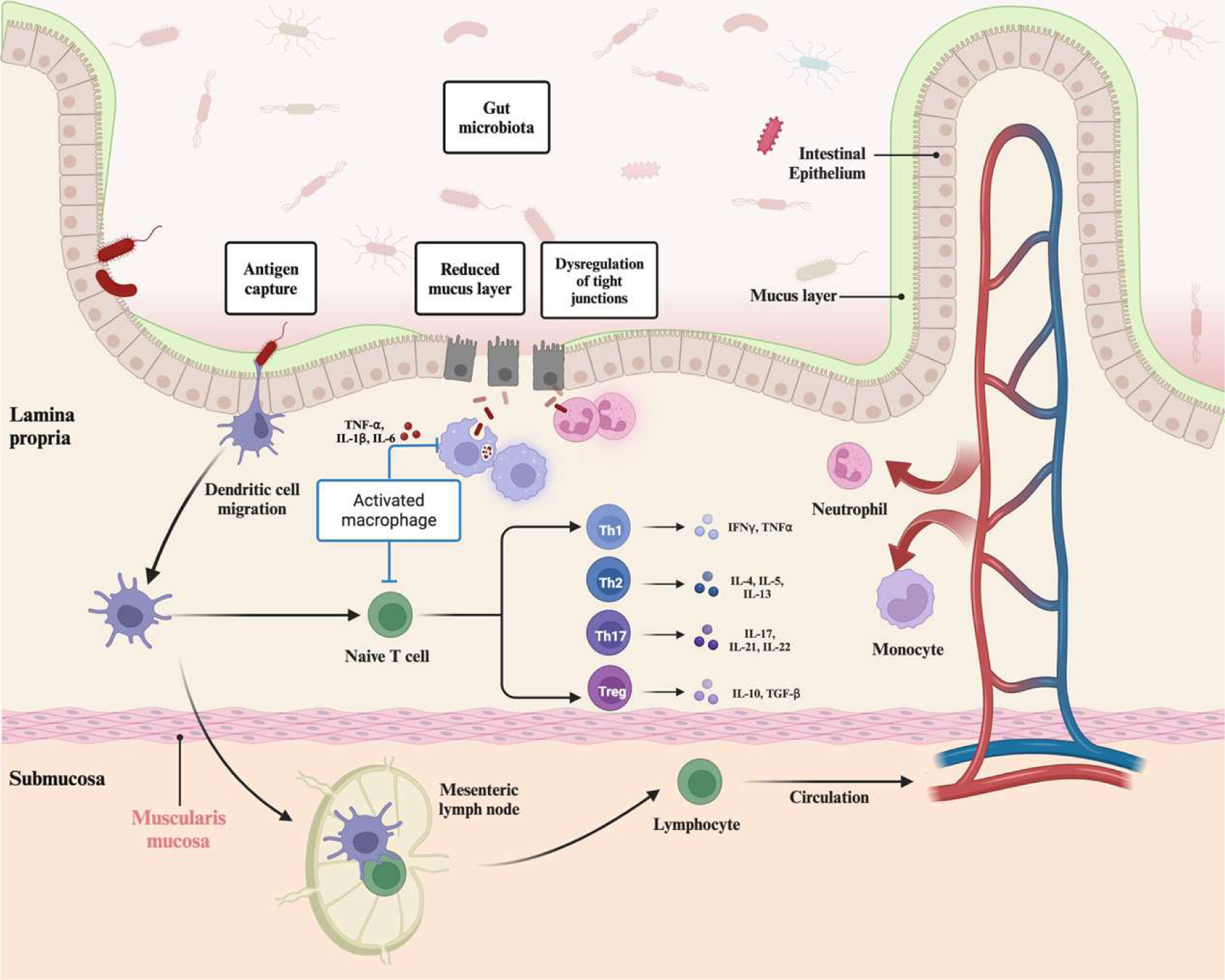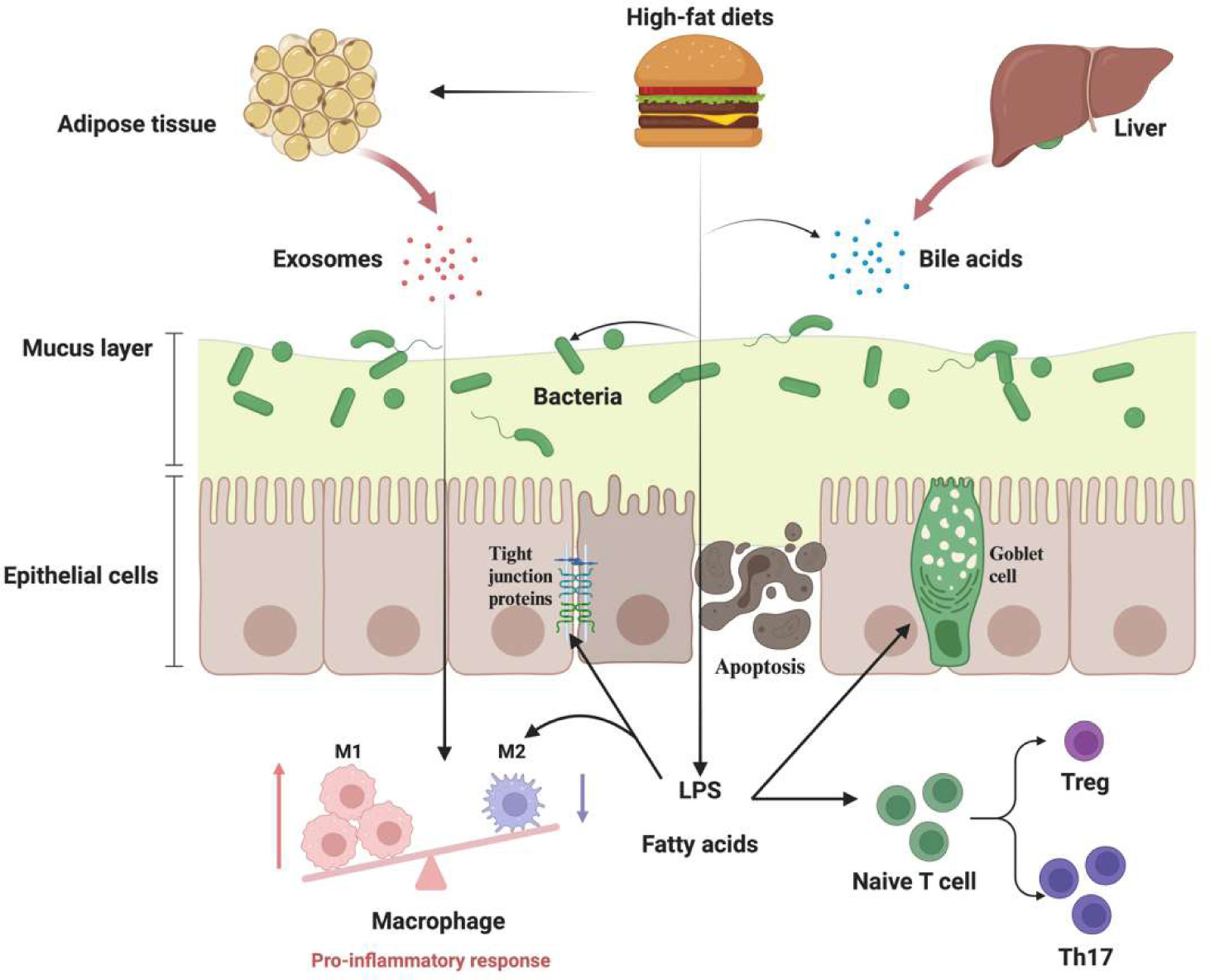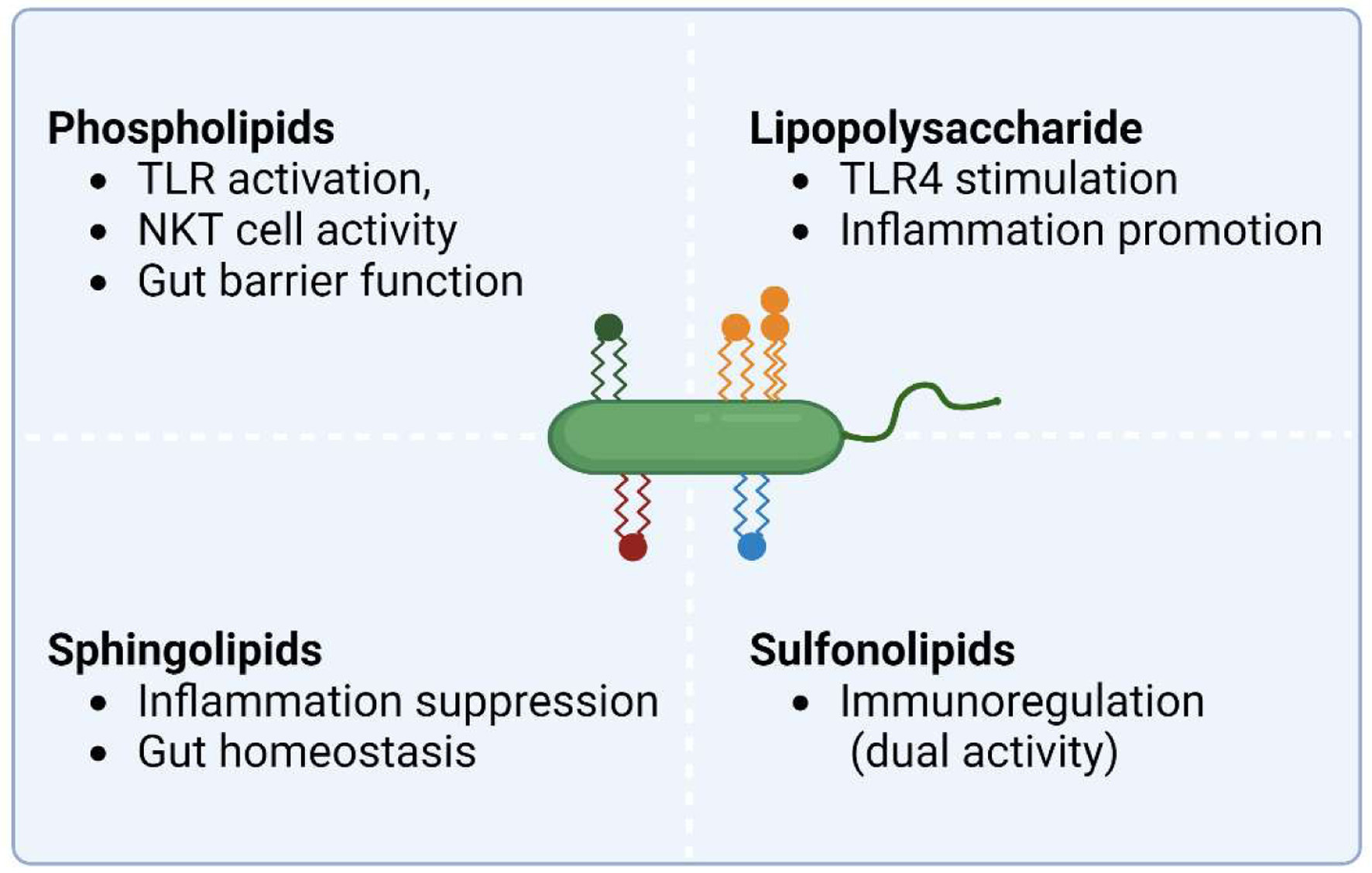
Figure 1. Dysbiosis and pathophysiology of inflammatory bowel disease (IBD). Multiple associated pathways, including gut microbiota, intestinal barrier, and immune systems, contribute to the incidence of IBD. In homeostasis conditions, trillions of commensal bacteria in the gastrointestinal tracts can help to mature the immune systems and produce beneficial metabolites, such as short-chain fatty acids. In IBD conditions, the composition of gut microbiota and metabolic profiles are altered, accompanied by an increase in some harmful bacteria, such as Escherichia coli. Impairment of the mucus layer and tight junction proteins permit the infiltration of microbiota and related antigens in lamina propria, activating innate immune systems and antigen-presenting cells to recruit neutrophils as the first responders in IBD. Neutrophils infiltrate and contribute to the first immune line via constructing neutrophil extracellular traps, excessive antigens can be recognized by macrophages and dendritic cells to further stimulate the activation of the adaptive immune system. With the stimulation and binding with antigen-presenting cells, naïve T cells can polarize and differentiate into various T helper and regulator cells, including Th1, Th2, Th17, and Treg, further contributing to the progress of IBD with the production of numerous cytokines. Figure 1 was created in Biorender.com (Agreement number: QL27CARACU).

Figure 2. The potential effects of high fat diets (HFD) on intestinal homeostasis and inflammatory bowel disease (IBD). The HFD-induced dysbiosis of gut microbiota, including the decrease in richness and imbalance of the Firmicutes/Bacteroidetes ratio, has been widely linked with bacteria-derived lipopolysaccharide (LPS) that can further trigger low-grade inflammation and immune dysregulations. The mucus layer, a crucial physical barrier in the intestinal, can also be damaged with HFD due to the dysfunction of goblet cells and alteration of peroxisome proliferator-activated receptor gamma (PPAR-γ) pathway. HFD can also induce gut permeability by modulating tight junction proteins and epithelial cell apoptosis. HFD-induced obesity is also associated with the progress of IBD via promoting M1 macrophage differentiation and recruiting lymphocytes. Figure 2 was created in Biorender.com (Agreement number: MC27CARFOD).

Figure 3. Gut microbiome-derived lipids and their known function in gut homeostasis. Phospholipids are the major components in bacterial membrane, lipopolysaccharide is a component found in Gram-negative bacteria which can activate the immune system through toll-like receptor 4 (TLR4), sphingolipids are produced mostly by commensal Bacteroidetes strains, sulfonolipids is present in some gut bacteria like Bacteroides, Alistipes, and Flavobacterium strains. Emerging studies have shown that these gut microbiota-derived lipids play some roles in gut barrier integrity and immunological regulation. Figure 3 was created in Biorender.com (Agreement number: GF27CARL9T).


